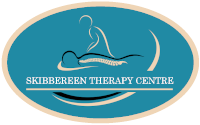Deep Tissue Massage
Deep tissue massage is used to treat chronic tension and injuries from overuse. It is concentrated on problem areas, applied firmly, and the therapist may use their elbows, forearms, fingertips and knuckles as well as their hands in order to break-up adhesions.
These bands of rigid tissue can restrict movement and circulation in muscle tissue and cause pain and inflammation. Deep tissue massage works to realign the different layers of tissue, treating the tendons, ligaments and fascia as well as the muscles to release tension and provide pain relief.
During treatment most patients experience some discomfort at certain points. This is expected given that scar tissue is being loosened, muscles lengthened, knots are being undone, and sub-layers of muscle moved back into the right place. Communication with the patient is two way and our therapist will ask you if you are feeling pain in specific areas, and whether the treatment needs to be dialled back a bit.
Deep tissue massage usually focuses on a specific problem, such as chronic muscle pain and injury rehabilitation, and is effective across a large range of conditions such as:
- Sports injury
- Repetitive strain
- Sciatica
- Recovery after a fall
- Postural problems
- Muscle tension
- Glutes, hamstring, quads, rhomboid, upper back spasm
- Osteoarthritis
- Fibromyalgia pain
Deep tissue massage can also lower blood pressure, heart rate and stress hormone levels, helping both mind and body relax. The therapist will advise if follow up sessions are required.
Relaxation Massage
Relaxation massage is a gentle and flowing treatment that relieves muscular tension and promotes general relaxation. It also improves circulation and range of movement and, unlike deep tissue massage, doesn’t cause discomfort. It moves fluid through your lymphatic system and helps your body digest food and rid itself of toxins, as well as soothing aches and encouraging the skin to heal minor abrasions.
It’s a luxurious experience which involves long strokes, gentle kneading and rolling of skin and muscle, and perhaps some rhythmic side to side rocking. It’s passive in that the therapist does all the work.
Before any massage treatment avoid large meals or alcohol. We also suggest you drink plenty of water as this helps flush toxins from your body, and that you allow plenty of time either side of the massage to get the most benefit. Our therapist will talk to you beforehand about any particular conditions or allergies etc, and will tailor the massage to suit.
A good relaxation massage leaves you with a sense of well-being and rejuvenation, and is the one to choose if you just want to be pampered and spoiled.
Hot Stone Massage
A hot stone massage helps you relax and eases tense muscles and damaged soft tissues. Smooth, flat, heated stones are placed on specific parts of your body and are usually made of basalt, a type of volcanic rock that retains heat.
The stones may be placed:
- along your spine
- on your stomach
- on your chest
- on your face
- on your palms
- on your feet and toes
Sometimes, cold stones are also used during a hot stone massage to calm any engorged blood vessels and to soothe the skin.
Heat has long been used to ease muscle tension and pain. It helps increase blood flow to the affected area and may also reduce muscle spasms and increase flexibility and range of motion. Cold therapy helps relieve inflammation. Depending on your symptoms, alternating hot and cold stones during your massage may be helpful.
